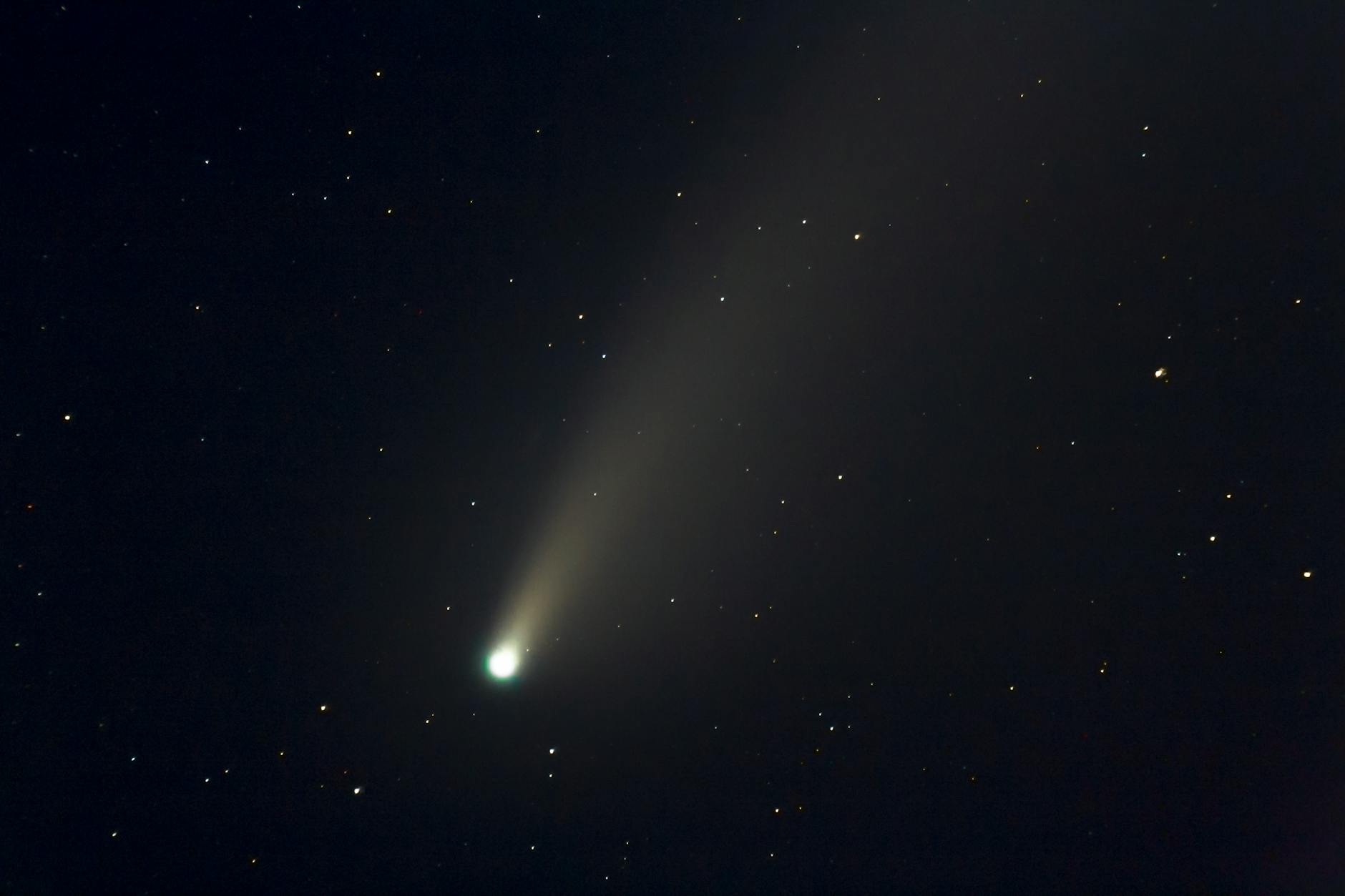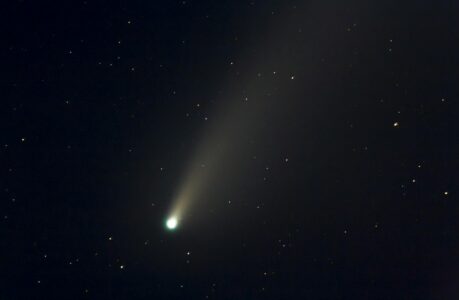Introduction
Near-Earth Objects (NEOs) stand as silent sentinels in the vast expanse of space, lurking in the cosmic shadows, occasionally making their presence known in the form of awe-inspiring meteor showers or, more ominously, in potential collision courses with our home planet. These celestial wanderers, ranging from asteroids to comets, hold both scientific intrigue and existential threat. In this essay, we delve into the multifaceted nature of NEOs, exploring their characteristics, detection methods, potential impact hazards, and humanity’s efforts to mitigate the risks they pose.
Origins and Types of Near-Earth Objects
NEOs originate from various sources within the solar system. One primary category comprises asteroids, rocky remnants from the early formation of the solar system, primarily located in the asteroid belt between Mars and Jupiter. Another class consists of comets, icy bodies originating from the distant reaches of the solar system, which occasionally venture close to Earth’s orbit.
Asteroids: Remnants of Cosmic History
Asteroids, often referred to as minor planets, vary in size from mere meters to several kilometers in diameter. They possess irregular shapes and are composed primarily of rock and metal. The composition of asteroids provides valuable insights into the early stages of our solar system’s evolution, serving as time capsules preserving ancient cosmic materials.
Types of Asteroids
Asteroids can be classified into several categories based on their composition and location within the solar system.
- C-Type Asteroids: These asteroids, primarily composed of carbonaceous materials, are among the most common in the asteroid belt. They are thought to retain volatile compounds from the early solar system, providing clues to the conditions that prevailed during its formation.
- S-Type Asteroids: Characterized by their stony composition, S-type asteroids dominate the inner regions of the asteroid belt. They are believed to represent fragments of larger bodies that were shattered through collisions during the early history of the solar system.
- M-Type Asteroids: Metallic or iron-rich asteroids, known as M-types, are relatively rare but are of great interest due to their potential economic value. These asteroids may contain valuable resources such as iron, nickel, and other metals, making them potential targets for future space mining ventures.
Comets: Cosmic Snowballs from the Far Reaches
Comets, on the other hand, consist of ice, dust, and rocky debris, forming spectacular tails when they approach the Sun. These celestial snowballs originate from the Kuiper Belt and the Oort Cloud, regions far beyond the orbit of Neptune. Their occasional incursions into the inner solar system offer astronomers a glimpse into the pristine materials that existed during the solar system’s infancy.
Types of Comets
Comets can be categorized based on their orbital characteristics and composition, providing insights into their origins and evolution.
- Short-Period Comets: These comets have relatively short orbital periods, typically less than 200 years, and originate from the Kuiper Belt or scattered disk regions beyond Neptune. Examples include Halley’s Comet, which returns to the inner solar system approximately every 76 years.
- Long-Period Comets: Long-period comets, with orbital periods exceeding 200 years, originate from the distant Oort Cloud, a reservoir of icy bodies located far beyond the orbit of Pluto. These comets follow highly eccentric orbits that bring them close to the Sun only once in several centuries or millennia.
- Sungrazing Comets: Sungrazing comets are a subgroup of long-period comets that pass extremely close to the Sun during their journey through the inner solar system. These comets often disintegrate or vaporize due to intense solar heat, creating spectacular displays known as sungrazing events.
Near-Earth Objects: Exploring the Threat and Fascination of Cosmic Wanderer
Near-Earth Objects (NEOs) stand as intriguing celestial bodies with profound implications for humanity. These cosmic wanderers, including asteroids and comets, hold both scientific fascination and existential threat. In this essay, we delve into the relevance of NEOs to our understanding of the cosmos and explore why they are significant in our quest to safeguard life on Earth.
Scientific Exploration and Understanding
NEOs offer a unique opportunity for scientific exploration and discovery. As remnants from the early formation of the solar system, these celestial bodies provide valuable insights into its evolutionary history. By studying NEOs, scientists can unravel the mysteries of planetary formation, asteroid dynamics, and the distribution of volatile compounds in the inner solar system.
Asteroids as Time Capsules
Asteroids, in particular, serve as time capsules preserving ancient cosmic materials. Their composition, ranging from metallic to carbonaceous, offers clues to the conditions prevailing during the solar system’s infancy. By analyzing asteroid samples and conducting remote observations, scientists can reconstruct the processes that shaped the terrestrial planets and elucidate the origins of organic compounds essential for life.
Comets as Cosmic Messengers
Comets, with their icy nuclei and spectacular tails, provide insights into the outer reaches of the solar system. These cosmic messengers originate from distant reservoirs such as the Kuiper Belt and the Oort Cloud, carrying pristine materials from the early solar nebula. By studying comets, scientists gain valuable information about the conditions prevailing in the outer solar system and the role of volatiles in planetary accretion and evolution.
Potential Impact Hazards
Beyond their scientific value, NEOs pose a significant threat to life on Earth. Collisions with sizable asteroids or comets have the potential to unleash devastation on a global scale, with consequences ranging from widespread destruction to long-term environmental impacts. Understanding and mitigating the impact hazards of NEOs are essential for safeguarding humanity’s future.
The Threat of Catastrophic Collisions
The history of our planet bears witness to the catastrophic consequences of cosmic impacts. Events such as the Chicxulub impact, which led to the extinction of the dinosaurs, underscore the potential dangers posed by NEOs. While the probability of a catastrophic collision in any given year is low, the potential consequences demand vigilance and preparedness.
Mitigation Strategies and Planetary Defense
Efforts to mitigate the impact hazards of NEOs encompass various strategies, from early detection and tracking to deflection and interception. Projects such as NASA’s Planetary Defense Coordination Office (PDCO) monitor NEOs and assess their potential threat levels, enabling timely responses in the event of a hazardous encounter. Proposed mitigation techniques, including kinetic impactors and gravity tractors, aim to alter the trajectory of NEOs and minimize the risk of collision with Earth.
Economic Opportunities and Space Exploration
In addition to their scientific and existential significance, NEOs present economic opportunities and incentives for space exploration. Asteroids, in particular, contain valuable resources such as metals, water, and rare minerals, which could be mined and utilized to support future space missions and sustain human presence beyond Earth.
Asteroid Mining and Resource Utilization
The prospect of asteroid mining holds promise for unlocking the vast wealth of resources available in space. By extracting metals and volatiles from asteroids, humanity could mitigate resource scarcity on Earth and enable the expansion of space exploration and colonization. Companies like Planetary Resources and Deep Space Industries are pioneering efforts to develop technologies for asteroid prospecting and resource extraction.
Exploration and Colonization Beyond Earth
NEOs serve as stepping stones for humanity’s expansion into the cosmos. By harnessing the resources of asteroids and comets, we can establish sustainable infrastructure and habitats beyond Earth, enabling long-term exploration and colonization of the solar system. Initiatives such as NASA’s Artemis program aim to return humans to the Moon and pave the way for crewed missions to Mars and beyond.
Detecting Near-Earth Objects
The detection of NEOs is paramount in assessing potential impact hazards and formulating mitigation strategies. A variety of methods are employed to identify and track these celestial bodies, ranging from ground-based telescopes to sophisticated space observatories.
Ground-Based Observations
Ground-based observatories equipped with advanced telescopes play a crucial role in NEO detection. Projects like the Catalina Sky Survey and the Pan-STARRS (Panoramic Survey Telescope and Rapid Response System) continuously scan the night sky, capturing images of celestial objects and identifying potential NEOs through precise measurements of their positions and trajectories.
Space-Based Surveys
In addition to ground-based observations, space-based surveys provide a complementary perspective on NEO detection. NASA’s NEOWISE (Near-Earth Object Wide-field Infrared Survey Explorer) mission, for instance, utilizes infrared technology to detect and characterize asteroids and comets, offering valuable data on their size, composition, and thermal properties.
Public Awareness and Engagement
Public awareness and engagement play a vital role in fostering support for NEO research and mitigation efforts. Initiatives such as International Asteroid Day aim to raise awareness of the potential impact hazards posed by NEOs and promote collaboration among scientists, policymakers, and the general public.
Citizen Science Initiatives
Citizen science initiatives, such as the Asteroid Zoo project, empower individuals to contribute to NEO research by analyzing astronomical data and identifying potential objects of interest. By harnessing the collective efforts of citizen scientists worldwide, these initiatives expand the scope of NEO detection and monitoring capabilities.
Near-Earth Objects
Near-Earth Objects continue to captivate the human imagination with their enigmatic nature and potential impact hazards. As humanity ventures further into the cosmos, our understanding of NEOs deepens, offering insights into the dynamic processes that shape our solar system and the measures needed to safeguard our planet against cosmic threats.
In this essay, we’ve explored the origins, types, detection methods, potential impact hazards, and mitigation strategies associated with Near-Earth Objects. From the rocky remnants of asteroids to the icy trails of comets, these celestial wanderers remind us of the dynamic and ever-evolving nature of our solar system. As we continue to study and monitor NEOs, we gain valuable insights into the cosmos while striving to protect life on Earth from the potential dangers they pose.

